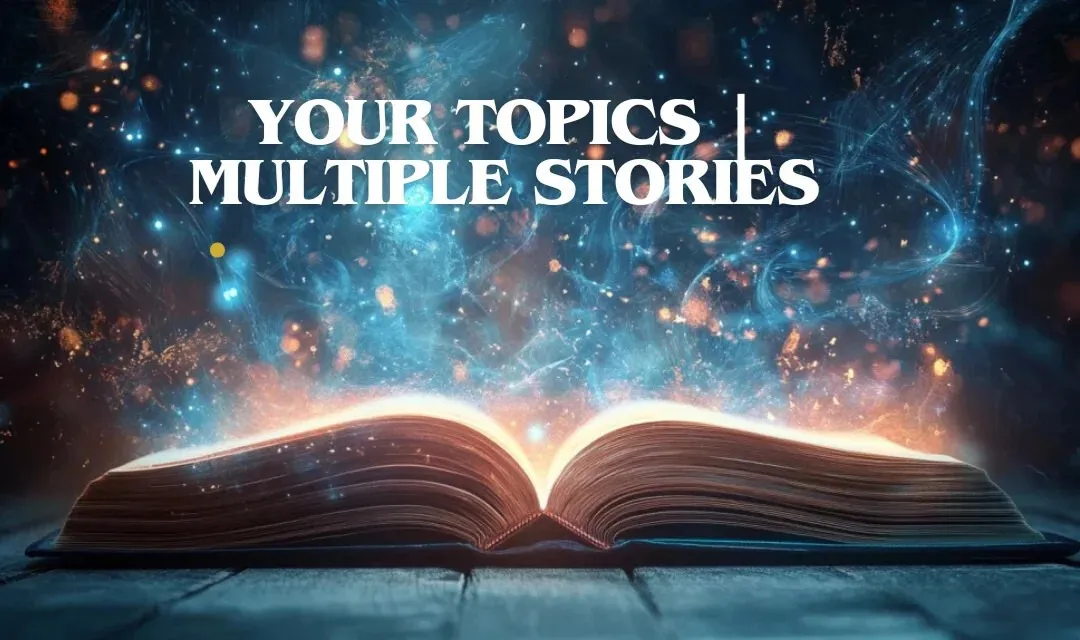In today’s digital world, information is everywhere. People can read articles, watch videos, and listen to podcasts on almost any subject within seconds. But the challenge is not finding content — it is finding the right content. That is where the idea of your topics multiple stories comes in. It is a concept where modern technology, especially artificial intelligence (AI), organizes and delivers stories that match your unique interests, giving you a steady flow of relevant updates.
Understanding the Idea Behind “Your Topics Multiple Stories”
When you open a traditional news website, you usually see the same headlines as everyone else. But in a personalized news experience, the system looks at what you like, the topics you care about, and your past reading habits. It then selects multiple stories about each topic you follow, so you can get different perspectives on the same subject.
For example, if you are interested in renewable energy, a personalized system might show you:
- A research article about solar panel efficiency
- A news update about a new wind farm project
- An opinion piece about green policies in cities
- A guide explaining how homeowners can use renewable energy
All of these are linked to your chosen topic, but they come from different sources and angles.
How AI Powers the Experience
Artificial intelligence plays a central role in making “your topics multiple stories” possible. Instead of manually searching for articles, AI algorithms:
- Understand Your Preferences – They track which topics you click on, how much time you spend reading them, and what kind of sources you prefer.
- Collect Related Content – They scan thousands of websites, blogs, and video platforms to gather the most relevant updates.
- Organize Information by Topic – They group articles so you can see multiple stories on the same subject, arranged for easy reading.
- Adapt Over Time – The system learns from your habits and changes its recommendations as your interests shift.
This is why platforms like Google News, Flipboard, and others can provide such personalized experiences.
Why Multiple Stories Matter
Getting multiple stories about the same topic is more valuable than just seeing a single headline. It helps in several ways:
1. Better Understanding
A single news article may leave out certain details. Reading several different stories allows you to build a fuller picture of what is happening.
2. Different Viewpoints
Two publications can cover the same event but present it from different perspectives. Having access to multiple stories lets you compare and form your own opinion.
3. Balanced Knowledge
Multiple sources reduce the risk of relying on just one piece of information, which could be biased or incomplete.
Real-Life Examples of Topic Personalization
Here are a few practical scenarios of how “your topics multiple stories” works in daily life:
- Sports Enthusiasts: A cricket fan may see live score updates, player interviews, and commentary from different analysts — all connected to the same match.
- Technology Followers: Someone interested in smartphones could get product reviews, launch event coverage, and expert comparisons, all about the latest model.
- Health-Conscious Readers: A person tracking nutrition news might receive new recipe ideas, scientific studies, and expert tips on healthy eating.
Benefits for Readers
Choosing your topics and getting multiple stories about them offers several benefits:
- Saves Time – No need to search for each update manually.
- Keeps You Updated – You stay informed about every angle of your favorite topics.
- Improves Decision-Making – Better knowledge helps you make smarter choices, whether in business, lifestyle, or personal interests.
- Encourages Lifelong Learning – Access to a variety of viewpoints helps broaden your thinking.
Benefits for Content Creators and Publishers
The concept is not only good for readers; it also benefits the people who create and share content:
- Better Audience Targeting – Publishers can reach readers who are already interested in their topic.
- Higher Engagement Rates – Readers are more likely to click and read when they see content relevant to them.
- Improved Brand Trust – Providing quality stories consistently can make a publication a go-to source for certain topics.
How to Make the Most of “Your Topics Multiple Stories”
If you want to take full advantage of personalized topic-based content, here are some tips:
- Select Topics Carefully – Choose areas you genuinely care about so the system can give you meaningful stories.
- Engage With Content – Click, read, and interact with the articles so the AI can learn your preferences.
- Review and Update Interests – Over time, your interests may change. Update your topic list to keep the recommendations fresh.
- Explore Suggested Stories – Occasionally, try reading stories the system recommends outside your usual interests. This can introduce you to new subjects.
Challenges and Considerations
While the system is powerful, it is not perfect. There are a few challenges:
- Filter Bubbles – If the system only shows you content you agree with, you might miss other important viewpoints.
- Privacy Concerns – Personalized services require some level of data tracking, which raises privacy questions.
- Quality Control – The AI might occasionally recommend low-quality or irrelevant stories.
These challenges mean that readers should stay aware and make an effort to balance their news intake.
The Future of Personalized Story Selection
As AI improves, the “your topics multiple stories” approach will become even more accurate and interactive. We might see:
- Voice assistants reading multiple related stories aloud.
- Augmented reality interfaces showing stories visually.
- Real-time fact-checking for each piece of news presented.
Such advancements could make personalized information an even more powerful tool for learning and decision-making.
Conclusion
The idea of your topics multiple stories is more than just a way to read the news — it is a smarter, faster, and more personal method of staying informed. By combining AI technology with our individual interests, it turns an overwhelming flood of information into a tailored, organized stream of relevant updates.
For readers, it means depth, variety, and convenience. For creators, it means a better connection with their audience. And for the future, it means a shift toward information systems that truly understand what matters to each person.



